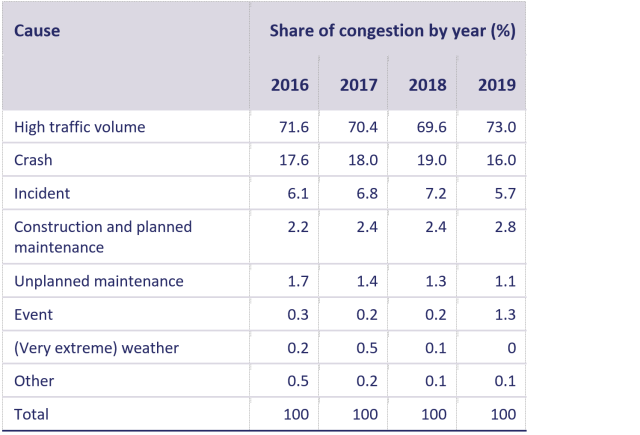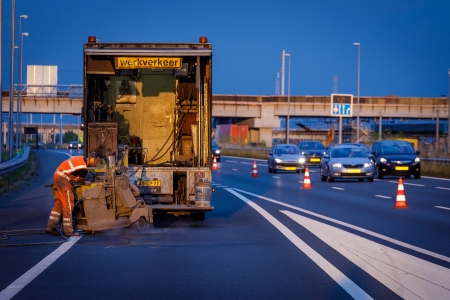Traffic congestion is defined in different ways. Rijkswaterstaat uses the term ‘congestion’ as a collective term for three kinds of stagnant traffic:
- Slow-moving traffic: traffic that does not, anywhere over a distance of at least two kilometres, drive faster than 50 km/h, but often faster than 25 km/h;
- Stationary traffic: traffic that, almost everywhere over a distance of at least 2 kilometres, drives more slowly than 25/km/h;
- Slow-moving to stationary traffic: slow-moving traffic over a longer distance, with stationary traffic at some sections [1].
Congestion notably occurs when traffic demand exceeds road capacity, when an incident such as a crash or a vehicle breakdown occurs or when roadworks take place, all temporarily reducing capacity and disrupting the traffic flow. The circumstances causing congestion may be permanent (for example at a lane drop on a motorway section or two motorways merging) or incidental (such as following a crash or broken down vehicle).
The RWS congestion registration system shows that in 2016-2019 ‘high traffic volume’ was the main cause of congestion on the Dutch main road network (70%-73%, see Table 1). This implies that road capacity could not meet traffic demand. In that period, crashes and incidents together caused between 22% and 26% of all congestion. The share of situations involving insufficient road capacity, crashes and incidents is reasonably stable, with small year-to-year shifts.

Table 1. Congestion causes by year [2] .
